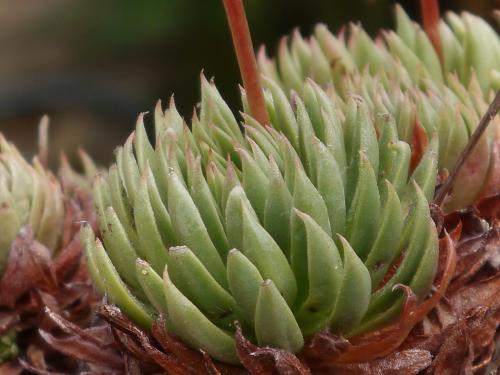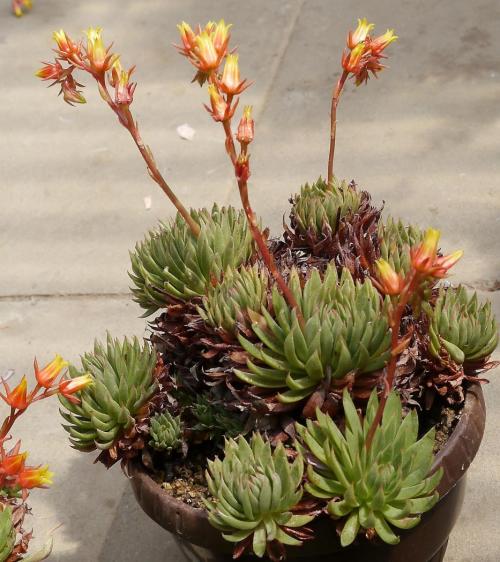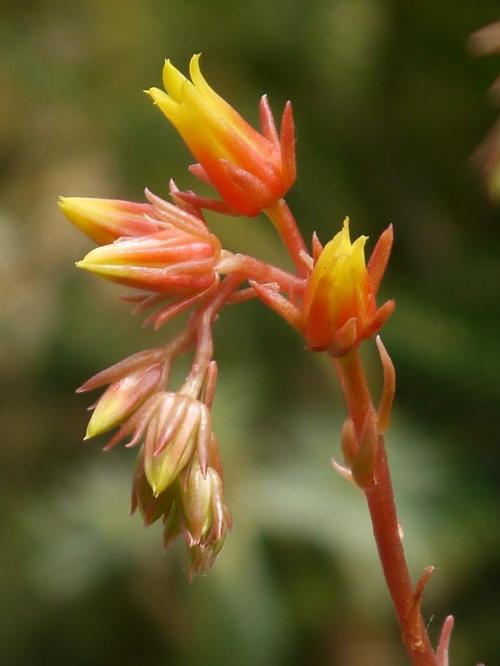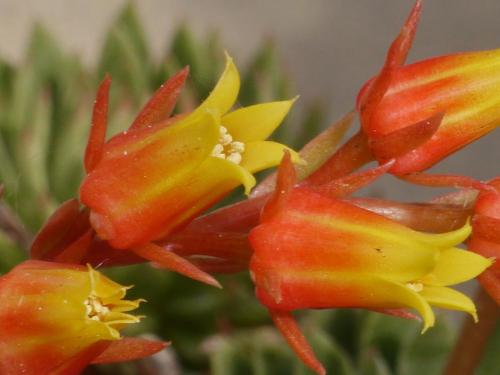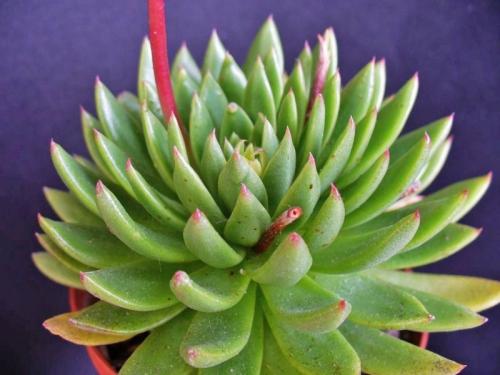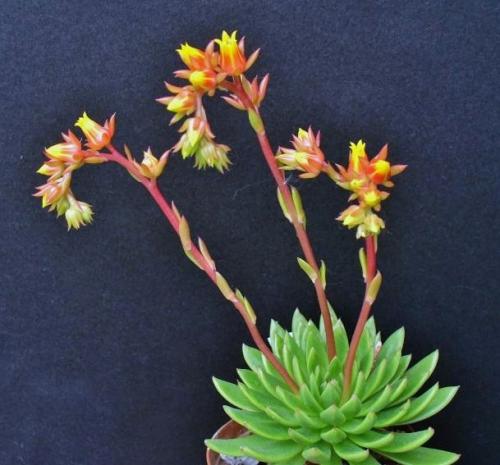CALDERONIAE Pérez-Calix, 1997 (engl./ fr.)
Series Secundae
Type : Carranza & Perez-Calix 3164, collected south of Santa Barbara, Mun. Ocampo.
Etymology : For Graciela Calderón de Rzedowski, Mexican botanist and wife of Jerzy Rzedowski.
Distribution : Mexico (Guanajuato : only known from type locality Mun. Ocampo).
First Description by Pérez-Calix in Acta Botánica Mexicana 38: 9. 1997 :
Perennial plant, glabrous, acaulescent or with a short stem covered by withered leaves, often developing rhizomes, single or caespitose.
Leaves 20 - 30, arranged in a rosette of 12 cm in diameter, fleshy, semiterete, upper surface flat or slightly channeled, usually with a slight ridge near the base, below convex, linear or acinaciform, lanceolate or narrowly oblong in outline, green, reddish when old, 2 - 6 cm long and 5 - 9 mm wide in the middle and 2 - 4 mm thick, apex acute with a faint reddish mucro.
Inflorescences 1 - 3 per rosette, with a one-sided raceme, with 1 - 20 flowers each, 6 - 12 cm long (incl. peduncle), peduncle 1 - 2 mm thick at the base, bracts alternate, appressed, lanceolate, 10 - 15 mm long and 2 - 3 mm wide, green, later reddish-orange, apex acuminate, base spurred, deciduous, the first flower 1.5 - 4 cm from the base of the peduncle, pedicels 3 - 9 mm long and 1 - 2 mm thick.
Flowers : Sepals not united at the base, linear, narrowly oblong to lanceolate, semiterete in section, subequal, the biggest 7 - 10 mm long and 1 - 2 mm wide, the smallest 3.5 - 8 mm long and 1 - 2 mm wide, corolla tubular to slightly urceolate, ca 8 - 12 mm long, petals fused at the base, forming a tube 4 mm or less long, apex spreading to slightly reflexed, colour outside orange or red, at the tips and inside yellow......
